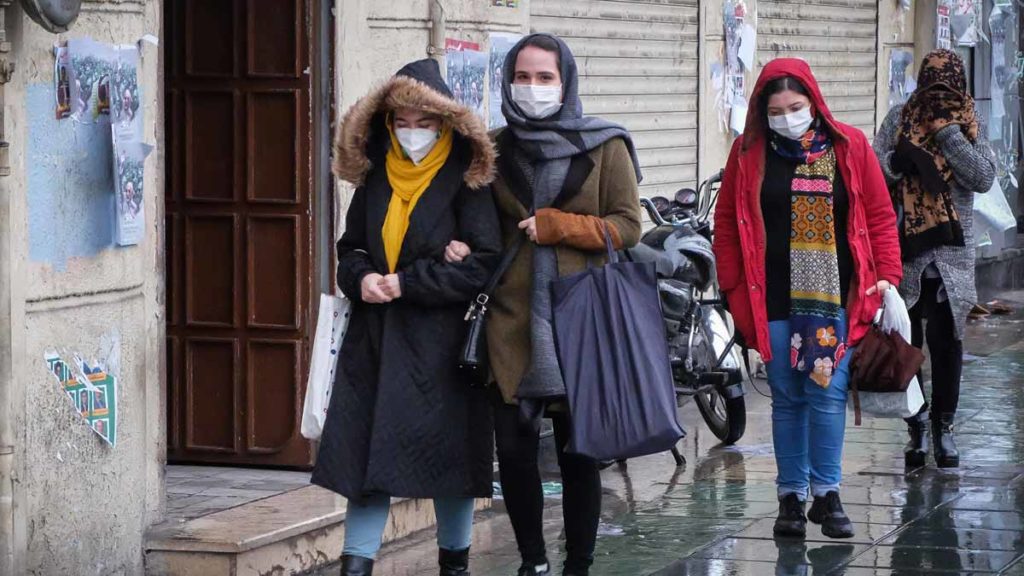Taiwan is 81 miles off Mainland China. It is a highly urbanized state of 24 million people with an extremely high population density. It is also one of the first places where the new coronavirus epidemic manifested itself. All things considered, Taiwan was expected to have the highest number of cases outside China. Yet Taiwan successfully managed to avoid an uncontrolled outbreak and only has 44 confirmed cases.
The lessons from Taiwan, presented in a new case study, are instructive for other countries — both for this outbreak and for future ones.

Early preparation
In April 2003, the Taiwan Department of Health was notified of seven cases of the severe acute respiratory syndrome (SARS) infecting healthcare workers (HCWs) at a large municipal hospital in Taipei. By the end of the outbreak, Taiwan recorded 483 infections, with a fatality rate of 12%.
The Taiwan government looked at these events closely and learned its lesson. Less than one year after the SARS outbreak, a National Health Command Center (NHCC) was established. The NHCC is meant to serve as a disaster management center command point, coordinating and advising authorities at a regional and central level, so that in the case of a new outbreak, no time and resources are wasted.
This was particularly useful as COVID-19 started rearing its head right around the Lunar New Year — during which millions of Chinese and Taiwanese were expected to travel for the holidays.
The NHCC quickly assessed and understood the threat, and started taking actions to prevent a large-scale epidemic. They created alerts for travelers and the general population, instructed healthcare workers, and dispatched the necessary containment resources.
A toll-free number was set in the early stages of the outbreak, where people could call and ask questions about the disease or report symptoms. As the toll-free number reached capacity, larger cities were instructed to develop their own such numbers.
The government addressed the issue of disease stigma and compassion for those affected by providing food, frequent health checks, and encouragement for those under quarantine. Several programs were deployed to assist schools, businesses, and furloughed workers.
But perhaps most importantly, Taiwan developed a realistic and practical plan.
Using health insurance and big data
Technology is a key ally when you’re fighting an outbreak, Taiwan realized. So they leveraged the national health insurance database to create a smart system to warn citizens and keep an eye on the situation.
The database was integrated with the customs information to generate a pool of big data. This data generated real-time alerts based on people’s travel patterns. It used QR code scanning and online reporting of travel history and documented health symptoms to classify passengers’ infectious risks. Then, Taiwanese authorities acted based on what the data suggested — and took some pretty draconic precaution measures.
People with the lowest risk were issued fast travel clearance, but people with higher risk were likely to be quarantined at home, whether they liked it or not.
Forcing people into quarantine is actually something that most states can do in the case of an outbreak (take the people aboard the Diamond Princess cruise ship, for example). But Taiwan decided to act quickly and take a preemptive measure.

Furthermore, they proactively sought out patients with severe respiratory symptoms based on records in the national health insurance (something which all developed countries can deploy with relative ease, with the notable exception of the US).
The technological approach was fairly straightforward, although it did include complex elements, such as the real-time alert generation system. But overall, this is a system that most countries could deploy — just like the following point.
Regular, accurate updates
As soon as the outbreak emerged, Taiwan’s minister of health and welfare started giving daily press briefings, as did the NHCC. In addition, the vice president of Taiwan (a prominent epidemiologist) gave regular public service announcements that were freely available on the internet.
The announcements were in a very ‘matter of fact’ fashion: when and where should masks be used, how important is it to wash hands, and why resources shouldn’t be hoarded (the export of medical masks was banned from the early stages, to avoid a shortage). These are all things we’ve heard over the course of the outbreak, but again, Taiwan started early, as they recognized the importance of these announcements. The politicians did not try to downplay or minimize the risks or use it as political leverage. In general, the message was straightforward and simple.
The communication strategy was clear and was also done in sign language. Communication in languages other than Mandarin was scarce, but for Taiwan’s citizens, the plan of action was clear and simple from the beginning.
Prepared, proactive, and clear
The recent viewpoint published in JAMA highlights Taiwan as an example of how governments should react to an outbreak. The first is author C. Jason Wang, director of the Center for Policy, Outcomes, and Prevention at Stanford University, and one of the researchers who worked on the reformation of Taiwan’s National Health Insurance System. He mentions that decisions must be “culturally appropriate”, hinting at tweaks that may need to be applied in different areas.
However, the main takeaway is clear: early action is crucial, as is effective and simple communication. Having a dedicated, well-trained task force also helps.
“In a crisis, governments often make difficult decisions under uncertainty and time constraints. These decisions must be both culturally appropriate and sensitive to the population.”
“Through early recognition of the crisis, daily briefings to the public, and simple health messaging, the government was able to reassure the public by delivering timely, accurate, and transparent information regarding the evolving epidemic. Taiwan is an example of how a society can respond quickly to a crisis and protect the interests of its citizens.”
Journal reference: ‘Response to COVID-19 in Taiwan: Big Data Analytics, New Technology, and Proactive Testing’, by Wang et al. JAMA.









